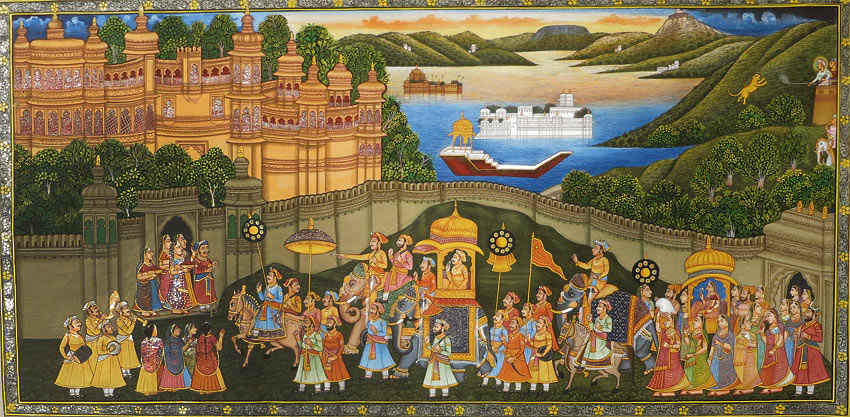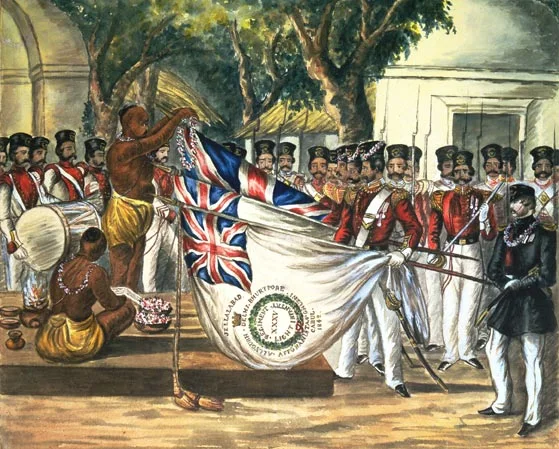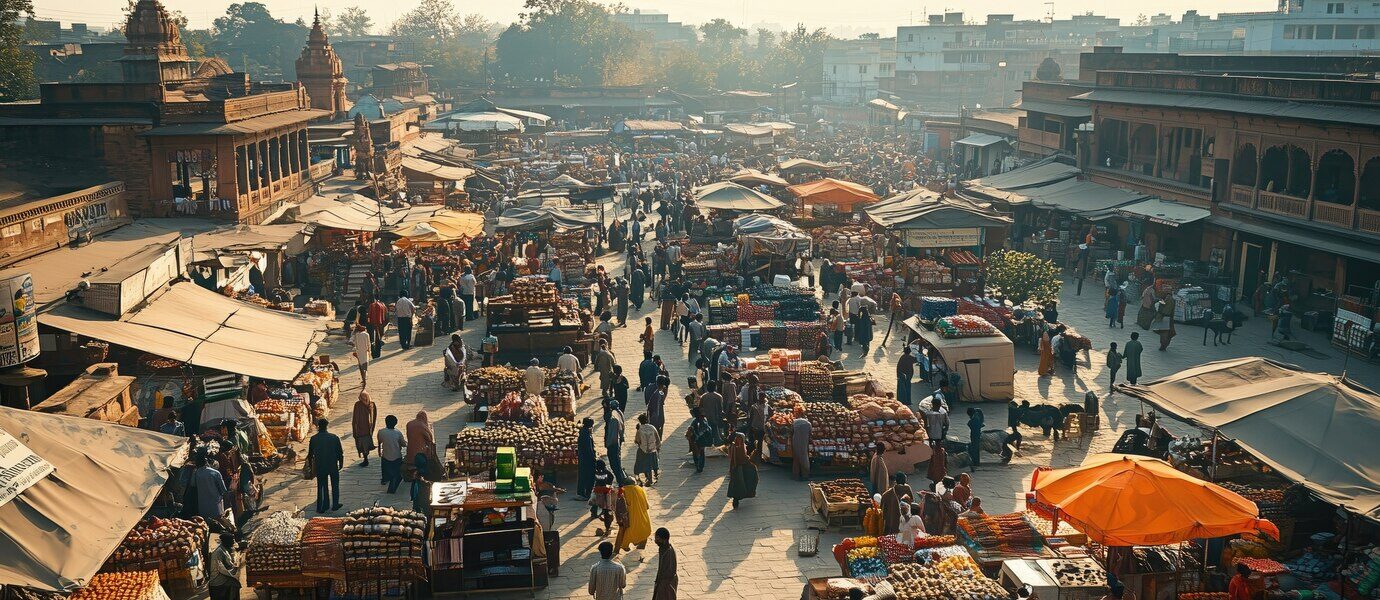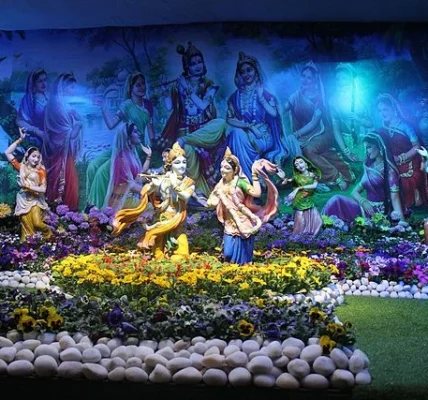The recent past of Uttar Pradesh (UP) is a complex tapestry made up of the strands of many kingdoms, empires, civilizations, and periods of cultural revolution. The region in question has been at the epicenter of India’s social and political inequality and cultural transformation from the early Mahajanapadas’ republics to the vast Mauryan Empire, the powerful Delhi Sultanate, the tyrannical hold of British rule, the power source raging 1857 Uprising, and ultimately the development of Uttar Pradesh. Uttar Pradesh’s political significance is still exceptionally present in contemporary India, and it occupies a significant role in the country’s constitutional story.
Establishing Uttar Pradesh: A Novel Political Persona
The United Provinces were given the name Uttar Pradesh in 1950 after India gained its independence in 1947. The creation of Uttar Pradesh marked the onset of an entirely different political identity rather than just an administrative shift. This shift signaled a new era in UP history and represented the visions that of millions of people.
The creation of Uttar Pradesh also resulted in a renewed emphasis on social justice and development. The state government took action to support infrastructure, health, and education. The formation enabled a more decentralized governance structure, which improved the administration and execution of social programs.
Ancient Uttar Pradesh Civilizations
The foundation of Uttar Pradesh’s identity is its ancient civilizations. Findings made at archaeological sites from places which include Jhusi, Alamgirpur, and Hastinapur indicate that the said region was the birthplace of early urban populations. These civilizations marked the early development of agricultural communities and trading groups, making an invaluable contribution to the history of Uttar Pradesh. The finding of tools, pottery, and other objects demonstrates that organized societies and developed economies existed before there was written history.
Mahajanapadas : The Basis of Uttar Pradesh’s Governance

This state’s history dates back to the sixth century BCE, at the time of the Mahajanapadas. The aforementioned sixteen sizable and robust kingdoms and republics established a framework for India’s early political structures. Among these, Kosala, Kashi, and Vatsa were situated in present-day Uttar Pradesh, which made the area a focal point of the political development of the older India.
Native Americans civilization gave way to organized kingdoms with delineated borders, strongholds, and permanent armies during the Mahajanapadas. The word “Mahajanapada” itself corresponds to “great realm composed of people,” referring to their early sovereignty models and structured systems of government.
Part of its system of administration began operations by a centralized monarchy supported by local administrators and ministers.
Kosala, one of the most famous Mahajanapadas of Uttar Pradesh, with Shravasti as its capital.
It was crucial to Gautama Buddhism’s life and a major hub for religious, commercial, and educational activity. Vastsa was renowned for its flourishing economy and encouragement of education and the arts. Kaushambi, in contemporary technology Prayagraj, was the principal city of the Vatsa, another notable Mahajanapada.
The kingdom had a strong system for management that included land revenue collection, parliamentary procedures, and negotiations with foreign nations.
Kashi was a prosperous and influential in politics kingdom that was located close to present-day Varanasi.
These early Uttar Pradesh kingdoms brought essential aspects of governance, including administration, law, taxes, and defense. Some even displayed a sophisticated political thought by having republican characteristics, where decisions were decided by assembly or councils.
Comprehending Uttar Pradesh’s history requires an awareness of the Mahajanapadas’ legacy. They laid their foundations for succeeding empires, especially the one known as the Mauryan Empire, and these took many of these young kingdoms’ administrative techniques and improved them.
Archaeological artifacts and writings from the past still demonstrate the extent of the Mahajanapadas’ influence on the region’s government, diplomacy, and cultural advancement. They are a crucial period in India’s historical record since they signaled the establishment of organized administration in Uttar Pradesh.
The Mauryan Empire: Foundation of a Pan-Indian Rule in Uttar Pradesh

The first pan-Indian empire, the Mauryan Empire, spanned the majority of India and began to exist around 321 BCE and terminated in 185 BCE.
It covered portions of present-day Iran as well as central and the northern parts of India.
The Mauryan Empire began when Chandragupta seized the opportunity put forward by Alexander’s death in 323 BCE, assembling an army and conquering the Parental power in Magadha, in modern-day eastern India.
Following his coronation, the emperor Chan used force and alliances to seize more territory.A man also known as Chanakya, was Chandragupta’s governor-general. He counseled Chandragupta and left a legacy for the kingdom. Kautilya suggested that the king have extensive networks of informants who would serve as the ruler’s watchdog.
The Arthashastra outlines the proper way for a state to run its affairs and hold into power. The judicial system of Chandragupta was very similar to the sort that the Arthashastra describes.
The Arthashastra was renowned for its emphasis on spies. The spotlight placed on truthfulness exposes a practical, almost cynical, understanding of what makes people tick.
In the year 300 BCE, Bindusara, who the son of Chandragupta, took the throne. He maintained the empire’s regions and kept it performing efficiently. Ashoka, and the son of Bindusara, served as the Mauryan Empire’s third ruler.
By carving gigantic stone pillars proclaiming his own edicts, Ashoka made his mark on history. Following an intense conflict against the Kalinga area on the Indian central-eastern coast, Ashoka reconsidered his intentions to grow his empire and instead embraced Buddhist along with its nonviolent principles.
Several of his decrees instructed everyone to live in harmony with one another and to eschew from violence, two essential Buddhist precepts.
Even though Ashoka’s family remained in power after his passing, the empire started to disintegrate. In 185 BCE, Brihadratha, the last of the Mauryas, was killed by the commander in chief, Pushyamrita, who afterwards established the Shunga Dynasty.
Sultanate of Delhi: A Mixture of Religions and Cultures

Another major period in Uttar Pradesh’s history began in the mid-12th century with the establishing of the Delhi, India Sultanate. Muslim monarchs arrived at this time, introducing with them new design concepts for architecture, administrative structures, and cross-cultural interactions.
Urban neighborhoods such as Jaunpur and Kannauj thrived during the Delhi Sultanate. During the Sharqi dynasty restaurant Jaunpur in particular developed into a hub of Islamic scholarship. Mosques, which were forts, and madrasas were also built under the Delhi Sultanate’s orders; many of these buildings are still considered historical landmarks.
Beyond politics, the Delhi Sultanate had significant consequences. People began to develop Indo-Islamic architecture and art, and they adopted Persian as the official language of government. These developments greatly influenced the blended culture that defines UP’s history.
British Domination: Resistance and Colonial The reorganization

Immediately following the Mughal Empire fell, the northern region of India, including Uttar Pradesh, was progressively seized by the British East India Company. The turbulent past of Uttar Pradesh saw a significant change when the area was firmly underneath British rule by the start of the nineteenth century.
New legal, educational in nature, economic administrative systems were brought about by British rule. Modern institutions, telegraph lines, as well as railroads started to appear.The British developed cities like Kanpur, Lucknow, and Allahabad (presently Prayagraj) into important centers of commerce and administration during their rule.
But British rule also brought about cultural unrest and economic exploitation. Farmers suffered displacement by land revenue policies, and imports hurt local industry. The the year 1857 Rebellion, a turning point in UP history, was ultimately the result of this unhappiness.
The 1857 Rebellion: The First Battle of Independence

An important participant in the 1857 Rebellion, also known as India’s First War in the Declaration of Independence, was the province of Uttar Pradesh. Locations of opposition to British rule featured the cities of Meerut, which Kanpur, and Lucknow.
A watershed event in UP’s history, the 1857 A rebellion represented the population’s shared desire for liberty and justice.
A number of different factors contributed to the uprising, such as British cultural imposed on the people, economic exploitation, and military complaints. The 1857 Rebellion had far-reaching effects, even though the British ultimately put it down. As a result of the rebellion, the British Crown took sole control of India and effectively shut down the East India Company. A more structured liberation movement also started throughout this time.
Legacy and Ongoing Impact
Tracing UP’s past reveals a tale of perseverance, development, and greatness. Every period has left an enduring impression, from the prehistoric Mahajanapadas to the uniting Mauryan Empire, from the varied Delhi Sultanate to the harsh British Rule, from the valiant 1857 Rebellion to the free and sovereign Formation of Uttar Pradesh, and from the region’s continued political significance.
UP’s history is a parallel of India’s larger journey rather than merely a list of events. It captures the goals, hardships, and victories of a people that are always adjusting to change. UP’s rich history will continue to influence its present and future.
In summary
The evolution of Indian culture is reflected in Uttar Pradesh’s chaotic past. A number of factors, such as the achievements of the Mahajanapadas, the Mauryan Dynasty’s political vision. We can comprehend the fundamental political significance of this vast territory by examining the blending of cultures under the Delhi Sultanate, the challenges posed by British rule, the passionate actions of the 1857 Revolutionaries, and the aspirations that arose from the creation of Uttar Pradesh.
A sufficient understanding of UP’s history is necessary to comprehend additionally its past and present contributions to the nation. In order to create a thriving and cohesive India in the future, UP’s leadership, teachings, and legacy will remain indispensable.





